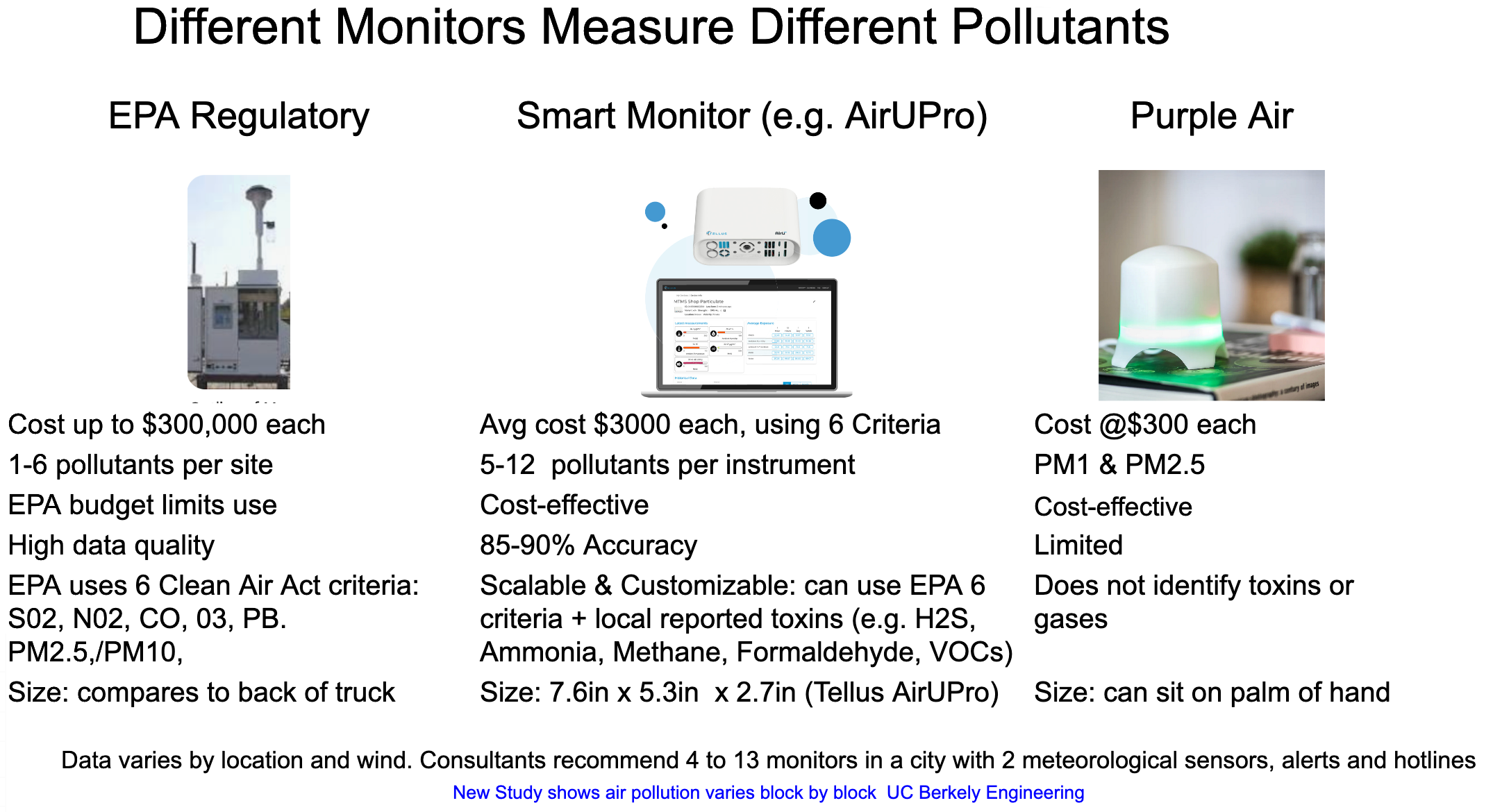Three broad types of monitors:
The EPA regulatory monitor: based on requirements of the Clean Air Act. Provided only by the EPA, costly and difficult to obtain. The Clean Air Act was originally passed in 1963 and has been revised several times since then.
“Smart” monitors: monitors developed by private companies that vary in size, shape and cost, contain a number of sensors, including some gases. Scalable, 85-90% accurate and more affordable. We are using Tellus AirUPro monitors.
Purple Air: an established monitor that is limited to 2.5 Particulate Matter. It does not identify specific toxins and cannot identify PM 2.5 sources, but is important because of ease of use, low cost and the role of particulate matter in health effects.
All of these types provide some of the data needed, but not all. In addition to the smart monitors and Purple Air monitors, we need meteorological monitors that can generate wind roses in order to identify sources of pollution. For toxins where monitors don’t yet exist, expensive laboratory testing is necessary.

